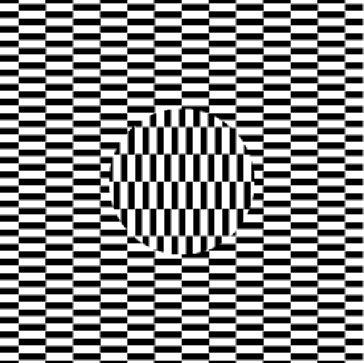The Statistics of Visual Correspondence: Insights into the Visual System
Cornelia Fermuller, Robert Pless, and Yiannis Aloimonos
A pattern by Hajime Ouchi has the surprising property that small motions can cause illusory relative motion between the inset
and background regions. The effect can be attained with small retinal motions or a slight jiggling of the paper and is robust over
large changes in the patterns, frequencies and boundary shapes. In this paper, we explain that the cause of the illusion lies in the
statistical difficulty of integrating local one-dimensional motion signals into two-dimensional image velocity measurements.
The estimation of image velocity generally is biased, and for the particular spatial gradient distributions of the Ouchi pattern the
bias is highly pronounced, giving rise to a large difference in the velocity estimates in the two regions. The computational model
introduced to describe the statistical estimation of image velocity also accounts for the findings of psychophysical studies with
variations of the Ouchi pattern and for various findings on the perception of moving plaids. The insight gained from this
computational study challenges the current models used to explain biological vision systems and to construct robotic vision
systems. Considering the statistical difficulties in image velocity estimation in conjunction with the problem of discontinuity
detection in motion fields suggests that theoretically the process of optical flow computations should not be carried out in
isolation but in conjunction with the higher level processes of 3D motion estimation, segmentation and shape computation.


